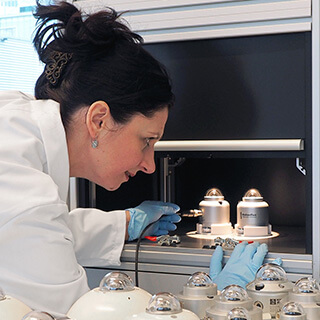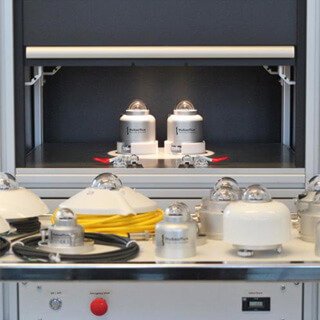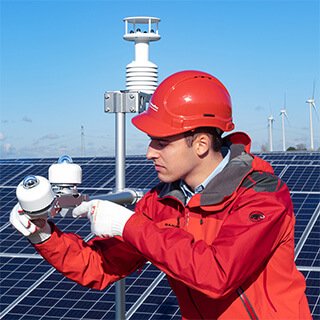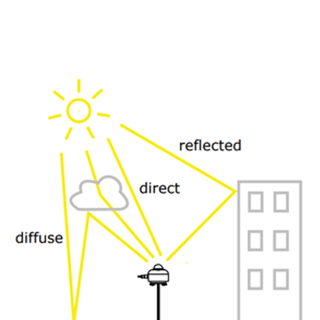Pyranometer calibration: everything you need to know
Calibrating a pyranometer regularly is considered good practice. It ensures that the pyranometer keeps generating data accurately. This article answers a couple of important questions about pyranometer calibration. Furthermore, it explains what calibration services Hukseflux provides.
Why would you calibrate a pyranometer?
Calibrating a pyranometer ensures accuracy and assures that the sensor continues to work properly. In addition, global standards like ISO 9001, IEC- 61724-1 and WMO require regular calibration in order to meet its standards.

performed in an indoor laboratory.
ISO 9001 is a global standard for quality management. It helps organisations to improve their performance and meet customer expectations. With an ISO 9001 certificate, you show commitment to global standards and ongoing improvement. Regular calibration is part of this standard. Complying with the requirement of regular calibration will prevent you from losing your certificate.
IEC 61724-1 requires calibration every two years for PV performance monitoring. This standard classifies pyranometers into three levels of accuracy: A (High accuracy), B (Medium accuracy), and C (Basic accuracy). Not calibrating your pyranometer every two years means you no longer meet this requirement and that you can no longer claim compliance. The WMO, which describes best practices in meteorological observations, requires the same.
Pyranometer calibration is not only a matter of good practice because these standardised practices require you to do so, but also because it is crucial for accurate measurements. Regular calibration also prevents the gradual loss of measurement accuracy over time.
Where do you calibrate a pyranometer?
The calibration of pyranometers typically takes place indoors in specialised laboratories which have the required expertise and equipment. Outdoor calibration is also possible. However, the world is moving towards indoor calibration because it has many advantages over outdoor calibration. One of the main advantages is that the uncertainty and processing time do not depend on the weather and season.
Hukseflux offers global calibration services. Calibration facilities of Hukseflux are currently in the EU, USA, Japan, China, Singapore, India, Brazil and Australia. These facilities use globally standardised reference pyranometers to ensure the highest accuracy. Hukseflux can also calibrate sensors of other brands. Sensors that Hukseflux can calibrate are listed below in Table 1. Contact Hukseflux for calibration services and additional information.
Table 1: Hukseflux's most common calibration services.
| HUKSEFLUX’ MOST COMMON CALIBRATION SERVICES | |||
| calibration item | brand and model | calibration method | comment |
pyranometers, albedometers and pyrheliometers
| Hukseflux
Kipp & Zonen | Pyranometers: conform ISO 9847:2023 Pyrheliometers: Internal method HFPC, similar to pyranometer calibration. | Hukseflux has limited repair capability for sensors other than the Hukseflux brand. |
| amplifiers | Hukseflux –TR amplifiers Kipp & Zonen AMPBOX series | Calibration and re-programming. | |
If you want more information on our worldwide calibration services, please read Pyranometer calibration.
How do you calibrate a pyranometer?

indoor pyranometer calibration system.
A qualified calibration facility should perform the calibration of a pyranometer. Hukseflux, an ISO 9001-certified lab, primarily conducts indoor calibrations.
The indoor calibration method of ISO 9847: 2023 A1 works by transferring the sensitivity of a reference sensor to a test sensor of the same model under a lamp, as shown in Figure 3. This reference sensor has the identical sensor, coating, and optics as the test sensor. This results in two sensors having nearly identical spectral selectivity and non-linearity. Therefore, accurate calibration can be conducted. The A1 method involves a shaded and unshaded measurement and exchange of the instrument positions. This procedure also includes a beam-stability verification. Typically, the calibration reference used indoors is calibrated outdoors following ISO9846. However, you may also use reference sensors calibrated indoors.

sensor of the same model under a lamp.
Suppose the calibration reference's temperature response, non-linearity and directional response are known. In that case, you may apply corrections from outdoor calibration conditions of the calibration reference to the typical reference conditions. You can also add a general “uncertainty of the transfer” to cover possible differences. Reference conditions are not standardised. Hukseflux uses the following conditions:
- Irradiance level 1000 W/m2
- Normal incidence irradiance
- Instrument temperature 20 °C
- Horizontal instrument position
- Spectrum: solar irradiance on a clear day
ISO TR 9901 specifies these conditions as “aligned with ISO 9060”.
The main benefits of indoor calibration are:
- Fast and independent of the weather
- Change of sensitivity is directly traceable to sensor or coating degradation
- Calibration at 20 °C, which is the reference condition for instrument temperature
- Calibration at normal incidence, which is the reference condition for directional response
- Reference conditions closely resemble IEC Standard Test Conditions for solar energy testing (STC), applied in photovoltaic (PV) modules and system testing.
As explained above, pyranometers are classified into three levels of accuracy: A, B and C. Each of these classes requires a maximum calibration uncertainty. The achievable uncertainty of calibrations at Hukseflux are:
- < ± 1.2 % for Class A (High accuracy)
- < ± 1.5 % for Class B (Medium accuracy)
- < ± 2.4 % for Class C (Basic accuracy)
These uncertainties match those of high-quality outdoor experiments. Table 2 shows a detailed process of our calibration services.
Table 2: Checklist of calibration services.
| HUKSEFLUX CALIBRATION SERVICES | ||
| subject | responsible party | responsibility |
| contact our Service desk / Service form | customer | Before service, contact service@hukseflux.com. Complete the Service (RMA) form and email it to us. We need to know the sensor model(s), quantity and serial number(s), the sensor condition, and information what servicing is needed; this may not only be calibration but also repair. |
| prices/quantity discounts | customer and Hukseflux | Increase efficiency; ask for our quantity discounts for batches of 3 or more pyranometers of the same make and model in one order. Please note that your shipment costs per instrument also benefit from batch processing. The calibration cost for sensors other than Hukseflux may be higher than that of Hukseflux. |
| options | customer | As an option, you may order a certificate including your name and contact information. |
| logistics: supply | customer | Specify shipment responsibility. Usually, the customer will be responsible for shipment both ways. |
| quotation | Hukseflux | The quotation will include a reference number. The quotation possibly includes a diagnostics fee in case of unclear sensor conditions. This fee must also be paid in case the sensor is irreparable. A cleaning fee may be charged per sensor if sensors are not clean. |
| order | customer | Include the Hukseflux reference number (usually our quotation/proforma invoice number). |
| confirmation | Hukseflux | Hukseflux will issue a confirmation with an estimated delivery time. |
| calibration | Hukseflux | Typical processing time is 15 working days. This can be shortened upon request. |
| logistics: pickup | customer | Please follow Hukseflux shipment directions. |
How often do you need to calibrate a pyranometer?
In the user manuals, a recommended calibration period is suggested. Most of the time, this is every one or two years. Calibrating your pyranometer every two years is the minimum requirement for international standards like IEC 61724-1 and WMO. This will ensure that all your measurements are accurate and achieve less erroneous results.
How much does pyranometer calibration cost?
Pyranometer calibration requires the instrument to be transported to a specialised service provider. It costs a significant amount of work, and often transport as well. Hukseflux contributes to cost reductions by:
1. Having calibration facilities in the leading global economies. In many cases, it is possible to avoid cross-border transport. Therefore, you won’t need additional paperwork, for example, when you need tax-free export and import permission.
2. Providing attractive quantity discounts.
Contact Hukseflux for further details.
Conclusion
Regular calibration of a pyranometer is crucial for maintaining accuracy and standard compliance. Indoor calibration ensures fast and accurate results. Hukseflux provides this service globally for various brands. While calibration costs are significant, they are a valuable investment in measurement accuracy. Hukseflux helps minimise the total cost of ownership and provides attractive quantity discounts.










